How to Tell if a Deep Cycle Battery Is Bad
Our editors pick the products & services we write about. When you buy through our links, we may get a commission. Learn more.
We'll go into detail on how to charge a deep cycle battery properly in this article. But first, we need to clear up what a deep cycle battery is and what it's used for.
You use deep cycle batteries when you require a battery to provide a steady voltage for a long period. Think of a battery in an RV or boat that's used to power the internal lights and equipment.
You want the battery to last a long time without the lights going dim or your instruments failing. That requires a battery that can provide a steady current for a long time, even when it's nearly flat.
By contrast, batteries used to start your boat or car engine need burst power. They need to provide high amps for a brief period to turn your engine over and start it.
The makeup of these batteries is different internally. This also means that how you charge a deep cycle battery differs from a burst type battery.
How To Charge A Deep Cycle Battery Properly
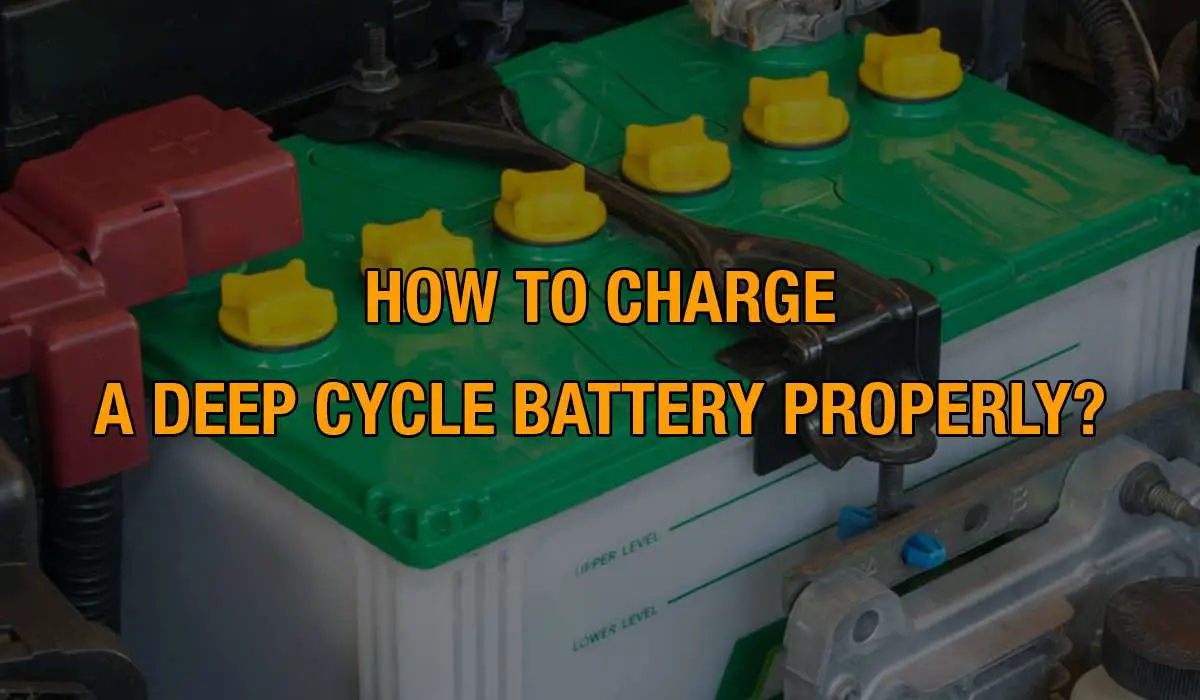
Choose correct charger based on battery type (flooded, AGM, or GEL)
Choosing the right battery charger will improve your battery's life. But choosing the wrong charger can damage your battery.
They design regular chargers for flooded cell batteries, and they will charge them quickly at a high ampere rate. The high amps can damage AGM and GEL batteries.
Instead, make sure you have a modern smart charger that works with AGM and GEL batteries specifically.
The fundamental difference between a regular and deep cycle battery charger is the charging speed. Flooded batteries can be charged at a much higher rate than AGM or GEL. This means they will become fully charged in a shorter time.
Find purchasing options for Smart Charger online:

Minn Kota MK 106 PC
Smart Battery Charger
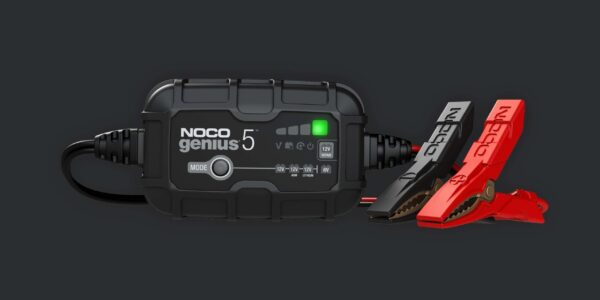
NOCO GENIUS5 5A
Smart Battery Charger
Use a deep cycle battery charger
Many modern battery chargers will have a specific setting for AGM or GEL batteries. It's essential to use this setting to charge your AGM battery correctly.
Chargers specifically designed for AGM have two distinct differences over regular chargers:
- The charger regulates the charging rate, ensuring that your battery can reach 100% without overcharging.
- Most AGM chargers will go through three distinct stages:
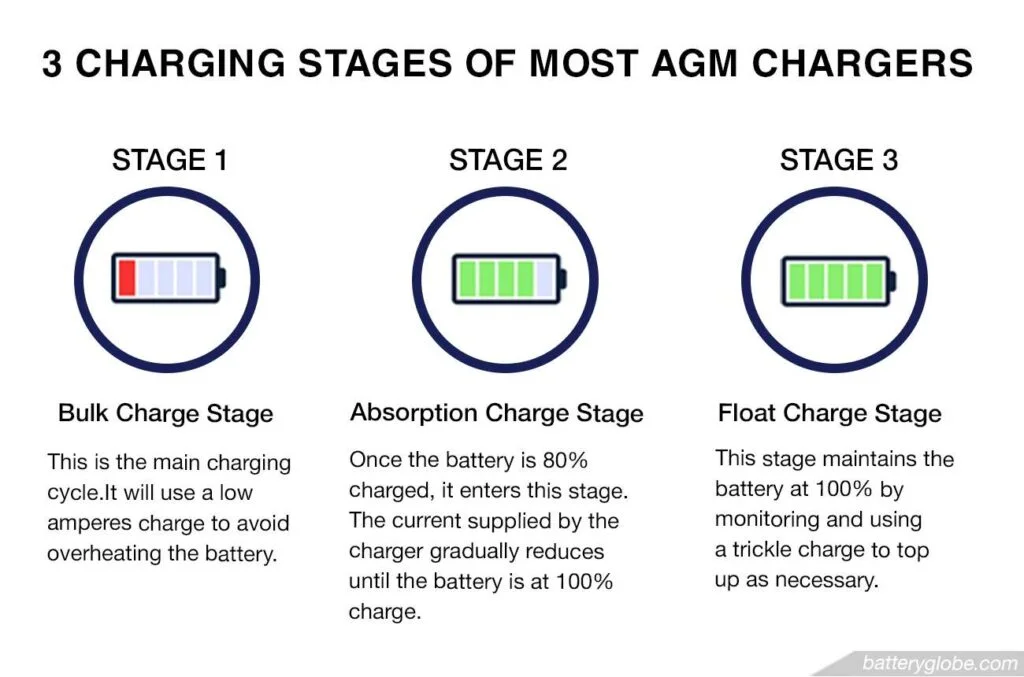
Use a regular charger
Regular battery chargers use high amperes to recharge your battery quickly. It is fine for flooded-style batteries. But fast charging may shorten the life of your AGM or GEL battery, and it's not recommended.
The other problem is that the high charge rate will cause heat inside the battery. This can prevent it from reaching a 100% charged condition.
Finally, a regular battery charger cannot be left connected as it will overcharge the battery. You will need to work out the time required to charge the battery fully and then disconnect the charger.
Size of the charger
A battery charger should be able to supply around 10% of the maximum amperes of your battery. If your battery is rated at 100 amp-hours, your charger should deliver 10 amps.
How long to charge a deep cycle battery?
The simplest way is to let your battery charger do it for you. If you have a smart battery charger, it will automatically choose the charge rate. Once your battery is fully charged, it will switch to maintenance mode. For any battery type, this is now the recommended option.
If you don't have a smart charger, then you must try to work it out manually. The easiest way to calculate how long to charge your battery is to divide the charger output's battery rating. For example, it would charge a 100 amp battery in 10 hours with a 10 amp charger.
However, this does not take into account the slower charging rate of deep cycle batteries. Nor does it account for the charge your battery already has.
It would help if you charged deep cycle batteries at much lower amperes rates. In this case, at a rate of 2 amps, a 100 amp hour battery will take just over two days to charge fully. We can calculate a more accurate charging time using this charging calculator.
How to Connect a Battery Charger
How to charge your battery directly STEP-BY-STEP
- Ensure the battery terminals are clean. Remove any grease and dirt. You can use wire wool if required.
- Make sure cables are tightly connected to the battery terminals.
- Connect the red (positive) cable to the red terminal first. Then connect the black (negative) terminal.
- Plug-in your charger and switch on.
- If the charger has an indicator, make sure it is charging.
- A smart charger will tell you when it has finished. If you are using a non-smart charger, remember to disconnect it after the charge time you calculated.
- To disconnect: Un-plug the charger, remove the black cable first, followed by the red cable.
- Grease the terminals to prevent corrosion.
How to charge a battery in a battery box
Where access is difficult, such as in a battery box, it is advisable to use "Anderson connectors". This makes connecting and charging much easier.
Charging Deep Cycle Battery With The Alternator As A Second Battery
In RVs and boats, a deep cycle battery is used to power the onboard electrical systems. The alternator can charge the battery, but connecting different batteries in parallel like this is not recommended. Instead, we offer a couple of alternative methods below:
Using an isolator
The purpose of the isolator is to allow the batteries to charge separately. The isolator will charge the battery with the lowest voltage first until both batteries are equal. Then it will switch to charge both batteries simultaneously.
The advantage of the isolator is that it keeps the batteries electrically isolated. This means you can't accidentally drain your engine starting battery when your accessories battery is flat.
Using a tool like "pro mariner digital mobile charger 130"
We connect equipment like the Pro Mariner 130 between the alternator and your batteries. It includes smart charging software so that each battery receives the correct charging amperes.
The device forces your alternator to produce its maximum output, which reduces your battery charging times. However, this is not good for your alternator that is designed to put out a low, steady current.
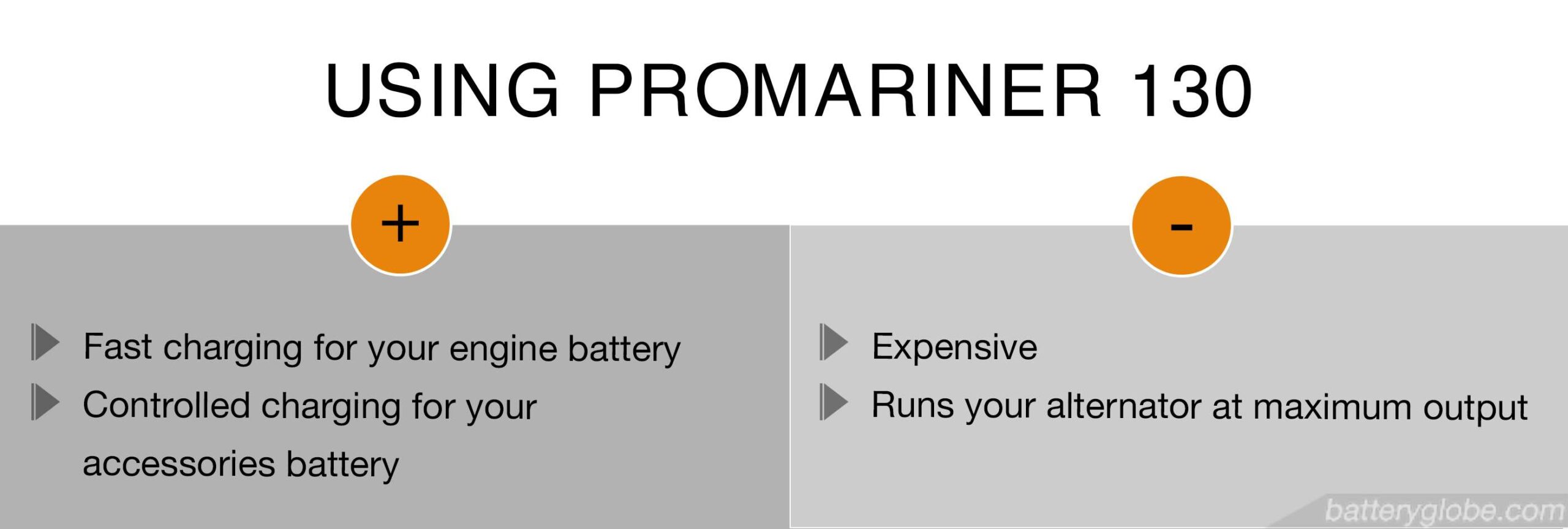
See Promariner 130 here.
Promariner 130 Digital Mobile Charger

How To Charge A Boat Battery On The Water?
There are multiple ways to charge a boat battery while on the water. Solar panels, wind power, towing a turbine, or the alternator from your engine can all be used.
This video on charging boat batteries will give you plenty of useful information.
Deep Cycle Battery Won't Charge: Problems And Troubleshooting
- Try the charger with another battery, if possible. As with any electrical system, it can fail.
- Check that you have the correct charger for your battery. If you have an AGM battery, it's advisable to use an AGM charger. It has different functions specific to the type of battery.
- Sulfated battery. Over time, batteries can become sulfated if they never achieve a fully charged state. Eventually, it will prevent the battery from charging 100%, and it will hold less charge.
- If your battery is old, it may just need replacing. Good battery life is anything over around four to five years. Beyond that age, they will start to fail.
Conclusion
Deep cycle batteries are different from standard batteries. It's essential to know how to charge a deep cycle battery properly. Incorrect charging of any battery can cause damage and shorten its working life.
We hope the guide above helps you to maintain your deep cycle batteries in excellent condition.
FAQs
Charging a deep cycle battery 2 amp or 10 amp?
Deep cycle batteries are designed to be charged at low amp ratings. Charging at higher rates can cause damage and will prevent the battery from reaching a fully charged state.
Can you overcharge a deep cycle battery?
Yes, this is possible with any battery if you are using an older-style simple charger. Use a smart charger to avoid overcharging.
Is it OK to trickle charge a deep cycle battery?
Trickle charging is the correct way to charge a deep cycle battery.
How to tell if a deep cycle battery is bad?
If you suspect there is a problem with your battery, you can test it using a multimeter. The table below gives some possible indications and associated issues:
| Voltage reading | Charger indication | Problem |
| 0V | N/A | Dead battery, possibly a short circuit |
| 10.5V or less | Charging | Most likely a dead battery cell |
| 12.4 or less | Fully charged | Sulfation |
Measuring the voltage is a useful way of assessing the condition of the battery. The following table gives typical values that you should see.
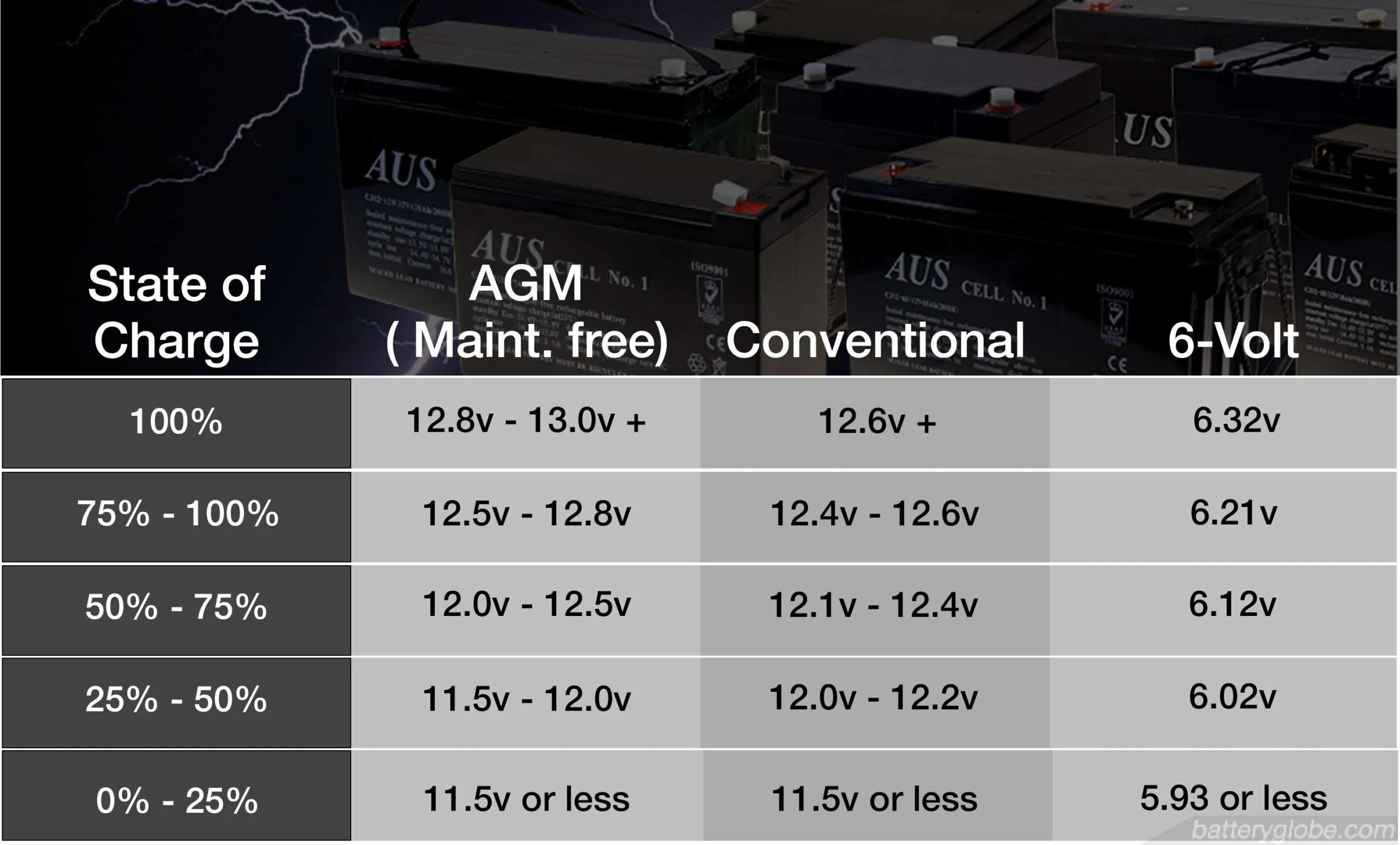
How to Tell if a Deep Cycle Battery Is Bad
Source: https://batteryglobe.com/how-to-charge-a-deep-cycle-battery-properly/